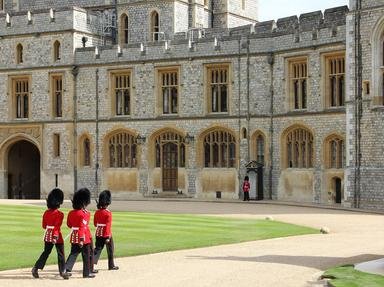Quiz Answer Key and Fun Facts
1. Edward I is regarded as one of the most naturally autocratic of English kings, having subjugated the Welsh and almost overpowered the Scots. Despite this reputation, he is also seen as the founder of Parliament as it is recognised today, as an assembly of both the Lords and Commons. What is the name given to the first such assembly, which met in 1295?
2. Edward II was a very different man from his father, Edward I. Fighting against the new King of Scots, Robert the Bruce, Edward lost all of the gains his father had made. What is the name of the most famous Scots victory of this period?
3. Edward III was known as a fan of the ideas of both heraldry and chivalry. In 1348, he founded a new chivalric order intended to be the highest award for honour in England. What was it called?
4. Edward IV came to the throne as the head of the Yorkist faction in the Wars of the Roses, as the eldest surviving son of Richard, Duke of York. In 1478, one of his brothers, who had fought alongside him during the war, was executed for treason. What was his name?
5. When Edward V came to the throne following the unexpected death of his father, he was being raised away from his mother and siblings in the household of his maternal uncle, Earl Rivers. In which city, located in the area known as the "Welsh Marches", was Rivers' household?
6. In 1553, it became clear to Edward VI that he was suffering from a fatal illness. As a committed Protestant, he had overseen the Protestant Reformation in England, and knew that it would be undone by his half-sister and legitimate successor, the staunchly Catholic Princess Mary. He therefore attempted to disinherit Mary in favour of whom?
7. Edward VII came to the throne in 1901 having spent much of his life excluded from the business of state by his mother, Queen Victoria. In 1903, he decided to undertake an overseas visit, without the approval of the government, that led to the implementation of a new 'arrangement' with which European power?
8. Edward VIII is famous in history as being the first British monarch to willingly abdicate his throne, which he did in order to marry the American, Wallis Simpson. Following his abdication, his brother and successor, King George VI, awarded him the title of Duke of ... where?
9. Of the eight kings named Edward, who had the shortest reign?
10. Of the eight kings named Edward, which one was the oldest on coming to the throne?
Source: Author
Red_John
This quiz was reviewed by FunTrivia editor
bloomsby before going online.
Any errors found in FunTrivia content are routinely corrected through our feedback system.

